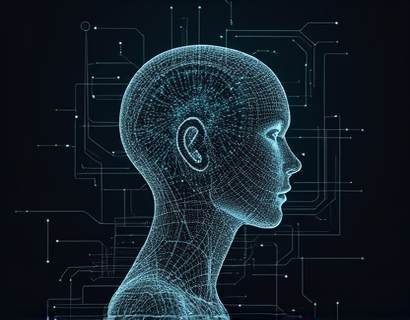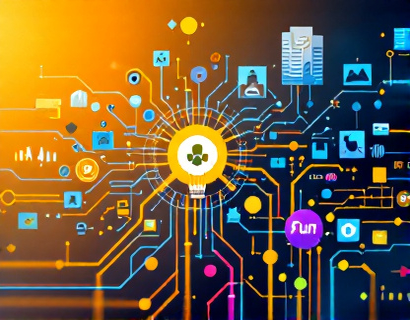Transforming Education with AI-Powered Chatbots: A New Era of Engaged Learning
The integration of artificial intelligence in educational settings marks a significant shift in how students and families access information and engage with learning materials. An AI-powered educational chatbot represents a cutting-edge tool designed to provide specialized insights into various industry services and knowledge areas, tailored specifically for safe and secure learning environments. This article delves into the multifaceted benefits of such technology, focusing on its application in educational institutions and families, and how it enhances the learning experience through a child-friendly interface.
The Role of AI Chatbots in Education
AI chatbots are revolutionizing the educational landscape by offering interactive, personalized, and instant access to information. These chatbots are programmed to understand and respond to user queries with precision, leveraging advanced natural language processing (NLP) and machine learning algorithms. In the context of education, this means students and families can receive accurate and up-to-date information on a wide range of topics, from academic subjects to industry-specific knowledge, all within a secure and controlled environment.
Specialized Insights for Students and Families
The primary function of an AI educational chatbot is to deliver specialized insights that cater to the diverse needs of students and their families. These insights are not only comprehensive but also verified to ensure accuracy and reliability. For students, this could mean getting detailed explanations of complex concepts, step-by-step guides for assignments, or even real-time assistance with homework. Families, on the other hand, can access resources that help them support their children's learning journey, understand curriculum changes, and stay informed about educational best practices.
Industry-Specific Knowledge
One of the most valuable aspects of AI-powered chatbots in education is their ability to provide industry-specific knowledge. This is particularly beneficial for students interested in particular fields, such as technology, healthcare, or engineering. The chatbot can offer insights into current trends, emerging technologies, and professional pathways, helping students make informed decisions about their future. For instance, a student interested in coding might receive detailed information about different programming languages, popular frameworks, and resources for learning and practicing coding skills.
Ensuring Safe and Secure Learning
The safety and security of students and families using AI chatbots are paramount. Educational institutions and developers must prioritize creating a secure environment where personal data is protected and content is appropriate for all users. This involves implementing robust data encryption, adhering to strict privacy policies, and regularly updating security protocols to safeguard against potential threats. Additionally, the chatbot's content is meticulously curated to ensure it meets educational standards and is free from any harmful or inappropriate material.
Child-Friendly Version
Recognizing the unique needs of younger learners, a child-friendly version of the AI chatbot is essential. This version is designed to be intuitive and engaging, using language and concepts that are accessible to children. It includes features such as simplified explanations, interactive elements, and visual aids to enhance the learning experience. Parents and educators can rest assured that their children are interacting with a trustworthy and educational tool that promotes safe and positive learning.
Enhancing Educational Engagement
The interactive nature of AI chatbots significantly enhances educational engagement. Unlike traditional learning methods, chatbots can adapt to the individual learning pace and style of each user. This personalization ensures that students receive the support they need, whether they require additional explanations or more challenging material. The chatbot can also track user interactions and progress, providing feedback and recommendations to further tailor the learning experience.
Real-Time Assistance and Support
One of the most immediate benefits of using an AI chatbot in education is the availability of real-time assistance. Students can ask questions at any time, and the chatbot will provide instant responses. This is particularly useful during study sessions, project work, or when facing difficult concepts. For families, the chatbot can serve as a reliable resource for quick answers to educational queries, reducing the need to search through multiple sources or wait for responses from educators.
Building a Community of Learners
AI chatbots can also foster a sense of community among students and families. By connecting users with similar interests or learning goals, the chatbot can facilitate discussions, study groups, and collaborative projects. This community aspect not only enriches the learning experience but also helps build a supportive network where students can share resources, tips, and encouragement. For families, this means having access to a broader range of educational resources and the opportunity to connect with other parents and educators.
Integration with Existing Educational Platforms
To maximize its effectiveness, the AI chatbot can be integrated with existing educational platforms and tools. This seamless integration ensures that students and families can access the chatbot's features without disrupting their current learning workflow. Whether it's connecting with learning management systems (LMS), educational apps, or online libraries, the chatbot can provide a unified and cohesive learning experience.
Continuous Improvement and Adaptation
The field of artificial intelligence is rapidly evolving, and AI chatbots in education are no exception. Developers continuously work on improving the chatbot's capabilities, incorporating feedback from users, and staying abreast of the latest educational research and trends. This commitment to ongoing improvement ensures that the chatbot remains a relevant and valuable tool for students and families, adapting to new challenges and opportunities in the educational landscape.
Case Studies and Success Stories
Several educational institutions have already implemented AI chatbots with remarkable success. For example, a high school in the United States integrated an AI chatbot to assist students with their math homework. The chatbot provided step-by-step solutions, explained concepts in different ways, and offered additional practice problems. As a result, students showed significant improvement in their math scores, and parents reported increased satisfaction with the support provided to their children. Another instance is a university that used an AI chatbot to guide students through the application process, answering queries about courses, admissions, and financial aid. This not only streamlined the process but also reduced the workload on administrative staff.
Conclusion
The introduction of AI-powered educational chatbots represents a transformative step in the way students and families engage with learning materials. By providing specialized insights, ensuring safety and security, and offering a child-friendly interface, these chatbots enhance the educational experience in meaningful ways. As technology continues to advance, the potential for AI chatbots to further revolutionize education is immense, promising a future where learning is more accessible, personalized, and effective.










































